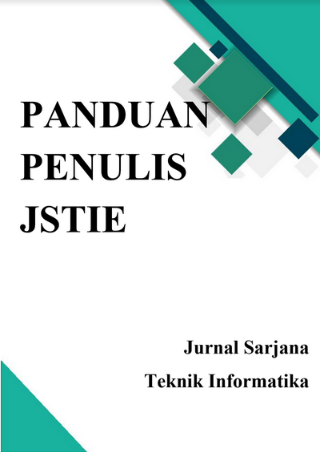Pembuatan Model Customer Relationship Management (CRM) Bidang Perindustrian (Studi Kasus Dinas Perindustrian Perdagangan Koperasi dan UKM Provinsi DIY)
DOI:
https://doi.org/10.12928/jstie.v6i1.12382Keywords:
Customer Relationship Management (CRM), Bidang Perindustrian, DISPERINDAGKOP DIY, COBIT 4.1Abstract
Dinas Perindagkop merupakan salah satu bidang unggulan Pemda DIY yang telah menerapkan Blueprint IT DIY (Jogja Cyber Province). Salah satu bidang di Disperindagkop yaitu Bidang Perindustrian, bidang tersebut memiliki kendala yaitu terbatasnya SDM dan kurangnya penguasaan dan pemanfaatan teknologi, Pelayanan yang dilakukan Dinas dalam melayani pelaku industri saat ini menggunakan caraofflinedatang langsung ke dinas dan mengisi formulir buku tamu, Sistem informasi Dinas hanya sebatas sistem informasi untuk membantu menyelesaikan pekerjaan dan tidak memberikan informasi untuk customer. Pihak Dinas terutama Bidang Perindustrianbelummemilikirancangan yang jelas untuk membangun sistem CRM. Subyek padapenelitian ini adalah “Pembuatan Model CRM di Bidang PerindustrianDisperindagkop DIYâ€. Tahapan Penelitian ini antara lain analisis yaitu analisis saa tini, Perhitungan Cobit 4.1, analisis kondisi yang diharapkan, analisis GAP, pembuatan model CRM, uji kelayakan dan Rekomendasi. Hasil dari penelitian iniberupa“Kerangka Model CRM di Bidang Perindustrian Disperindagkop DIY.Dan hasil uji kelayakan model menunjukkan 100% sesuai, sehingga dengan persentase tersebut nantinya dapat digunakan sebagai acuan dalam pemetaan CRM dan panduan terhadap tim management dalam perencanaan aplikasi.
References
Barnes, G. J, 2003 Recsrets Of Customer Relationship Management. Yogyakarta: Andi.
Disperindagkop. 2014. LaporanTahunanDinasPerindustrian, PerdaganganKoperasidan UKM Daerah Istimewa Yogyakarta, Yogyakarta: Disperindagkop
Gozali, I. 2013. Pembuatan Model CRM E-GovermentpadaDinasKelautandanPerikananProvinsi DIY. Skipsi. Yogyakarta: Universitas Ahmad Dahlan
Sulistyo, T.M. 2012. Pembuatan Model Customer Relationship Management (CRM) e-government di KOMINFO DIY. Skripsi. Yogyakarta : Program StudiTeknikInformatikaUniversitas Ahmad Dahlan.
Indrajit. 2004. Manfaat-manfaat E-Goverment,online. diakses 20 mei 2015.
Wibawa, K.C. 2011. Pembuatan Model SI/TI Dengan Cobit 4.1 dan Kerangka kerja zachman Di kantor Ketahanan Pangan Kab Klaten. Skripsi. Yogyakarta : Program Studi Teknik Informatika Universitas Ahmad Dahlan
Downloads
Published
Issue
Section
License
License and Copyright Agreement
In submitting the manuscript to the journal, the authors certify that:
- They are authorized by their co-authors to enter into these arrangements.
- The work described has not been formally published before, except in the form of an abstract or as part of a published lecture, review, thesis, or overlay journal. Please also carefully read Journal Posting Your Article Policy.
- The work is not under consideration for publication elsewhere.
- The work has been approved by all the author(s) and by the responsible authorities – tacitly or explicitly – of the institutes where the work has been carried out.
- They secure the right to reproduce any material that has already been published or copyrighted elsewhere.
- They agree to the following license and copyright agreement.
Copyright
Authors who publish with Jurnal Sarjana Teknik Informatika agree to the following terms:
- Authors retain copyright and grant the journal right of first publication with the work simultaneously licensed under a Creative Commons Attribution License (CC BY-SA 4.0) that allows others to share the work with an acknowledgement of the work's authorship and initial publication in this journal.
- Authors are able to enter into separate, additional contractual arrangements for the non-exclusive distribution of the journal's published version of the work (e.g., post it to an institutional repository or publish it in a book), with an acknowledgement of its initial publication in this journal.
- Authors are permitted and encouraged to post their work online (e.g., in institutional repositories or on their website) prior to and during the submission process, as it can lead to productive exchanges, as well as earlier and greater citation of published work.







